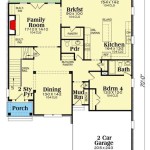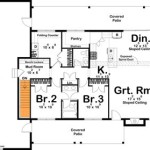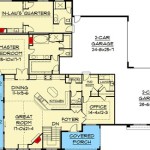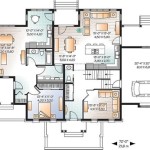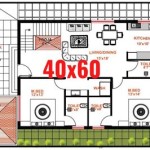Create Your Own House Plan
Designing and building your own home can be an exciting and rewarding experience. One of the first steps in this process is to create a house plan. A house plan is a detailed set of drawings that outlines the layout, dimensions, and other structural aspects of your home. While it's possible to hire an architect to create a house plan for you, it's also possible to do it yourself using online tools and resources.
If you're considering creating your own house plan, here are a few things to keep in mind:
1. Determine Your Needs
Before you start designing your house plan, it's important to take some time to think about your needs and lifestyle. How many bedrooms and bathrooms do you need? What kind of layout do you prefer? Do you want a formal dining room or a more casual eat-in kitchen? Once you have a good understanding of your needs, you can start to develop a floor plan.
2. Choose the Right Software
There are a number of different software programs available that can help you create a house plan. Some of the most popular programs include SketchUp, AutoCAD, and Chief Architect. These programs allow you to create 3D models of your home, which can be helpful for visualizing the layout and making changes. If you're not sure which software program to choose, there are a number of online resources that can help you compare different options.
3. Start with a Basic Floor Plan
Once you have chosen a software program, you can start creating your floor plan. Begin by drawing a rectangular outline of your home. Then, add walls, doors, and windows to create the basic layout. Once you have the basic floor plan in place, you can start adding details, such as furniture, appliances, and fixtures.
4. Consider Your Budget
As you're designing your house plan, it's important to keep your budget in mind. The cost of building a home can vary depending on a number of factors, including the size of the home, the materials used, and the complexity of the design. If you're working with a limited budget, you may need to make some compromises in your design. For example, you could choose to use less expensive materials or simplify the design of your home.
5. Get Feedback from Others
Once you have a draft of your house plan, it's a good idea to get feedback from others. This could include family members, friends, or a professional architect. Getting feedback can help you identify any potential problems with your design and make improvements before you start building.
6. Make Sure Your Plan is Code Compliant
Before you submit your house plan for approval, it's important to make sure that it is code compliant. Building codes vary from state to state, so it's important to check with your local building department to find out what codes apply to your area. Building codes are in place to ensure that homes are safe and structurally sound, so it's important to make sure that your house plan meets all of the applicable codes.
7. Get Your Plan Approved
Once you have a final house plan, you will need to submit it for approval to your local building department. The building department will review your plan to make sure that it meets all of the applicable building codes. If your plan is approved, you will be issued a building permit. The building permit is required before you can start construction on your home.
Creating your own house plan can be a challenging but rewarding experience. By following these tips, you can create a plan that meets your needs and budget and helps you build the home of your dreams.

Design Your Own Home House Designing Homes

House Plans How To Design Your Home Plan

Make Your Own Blueprint How To Draw Floor Plans

Make Your Own Floor Plans

From Sketch To Reality How Design A House You Ll Love

Make Your Own Blueprint How To Draw Floor Plans
Custom Floor Plans Making Your Home Uniquely Yours Lake City Homes

House Plans And Design

Altaira House Plan Custom Home Plans Sater Design Collection

Floor Plans Solution Conceptdraw Com
See Also

